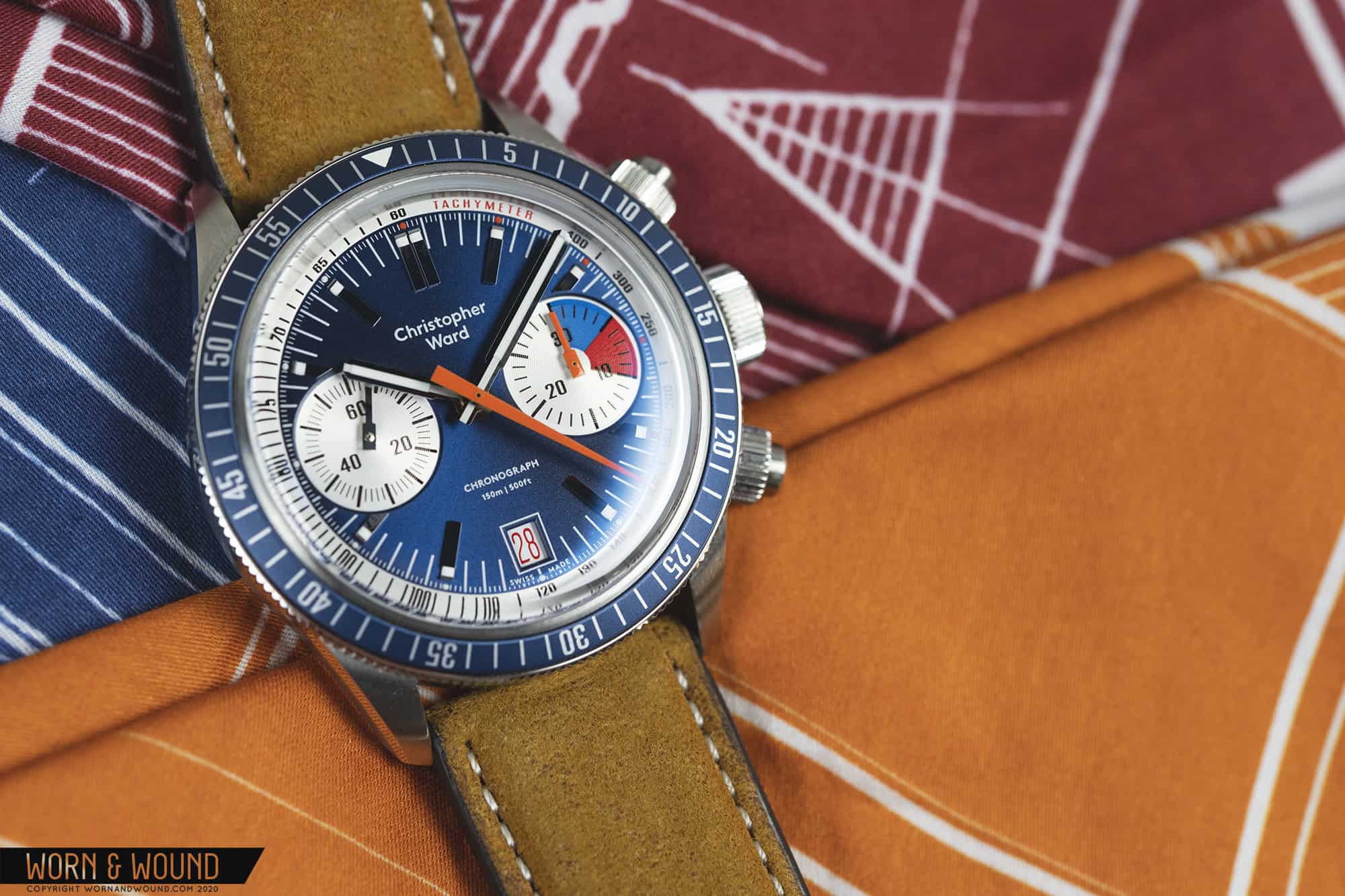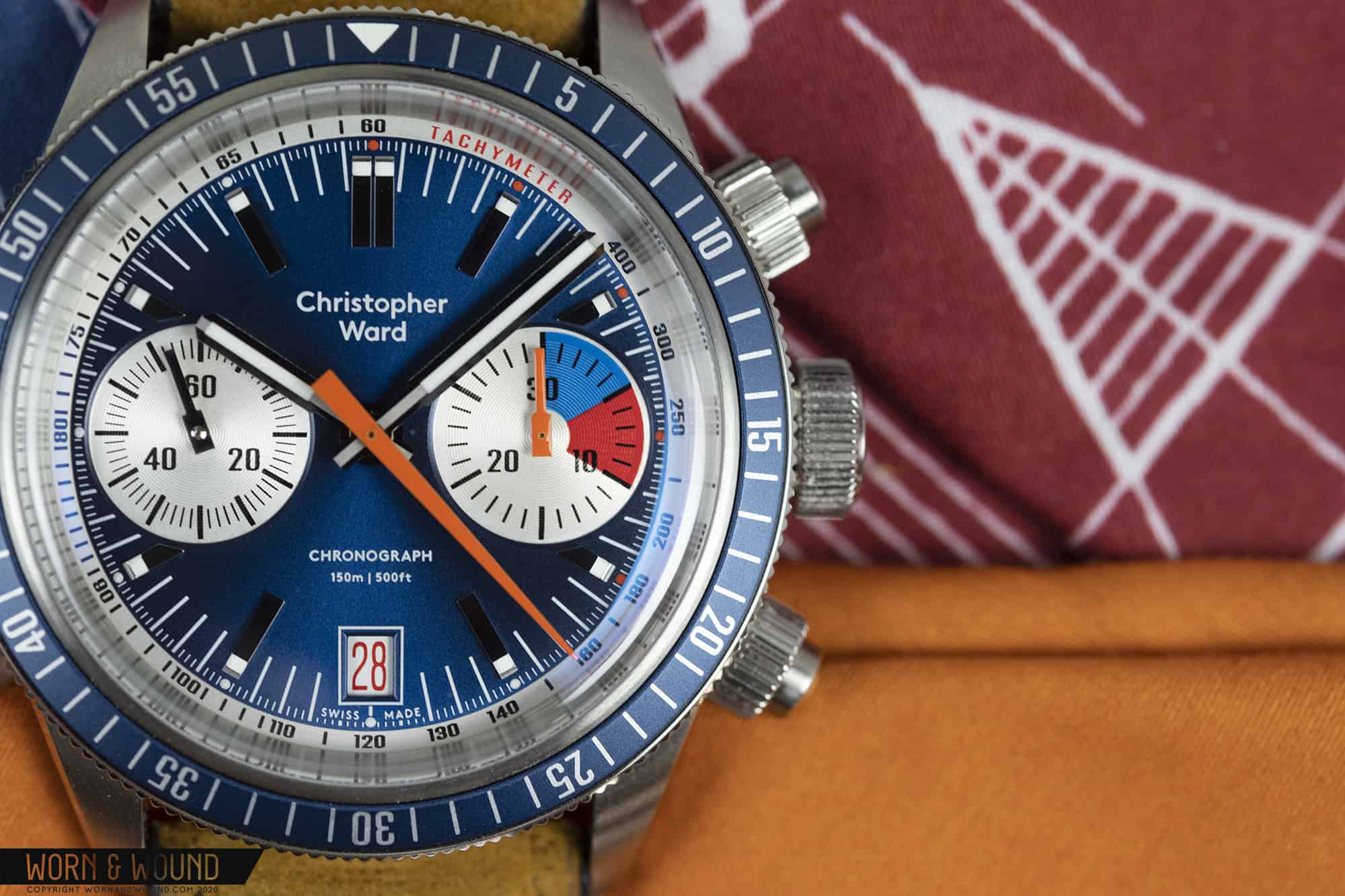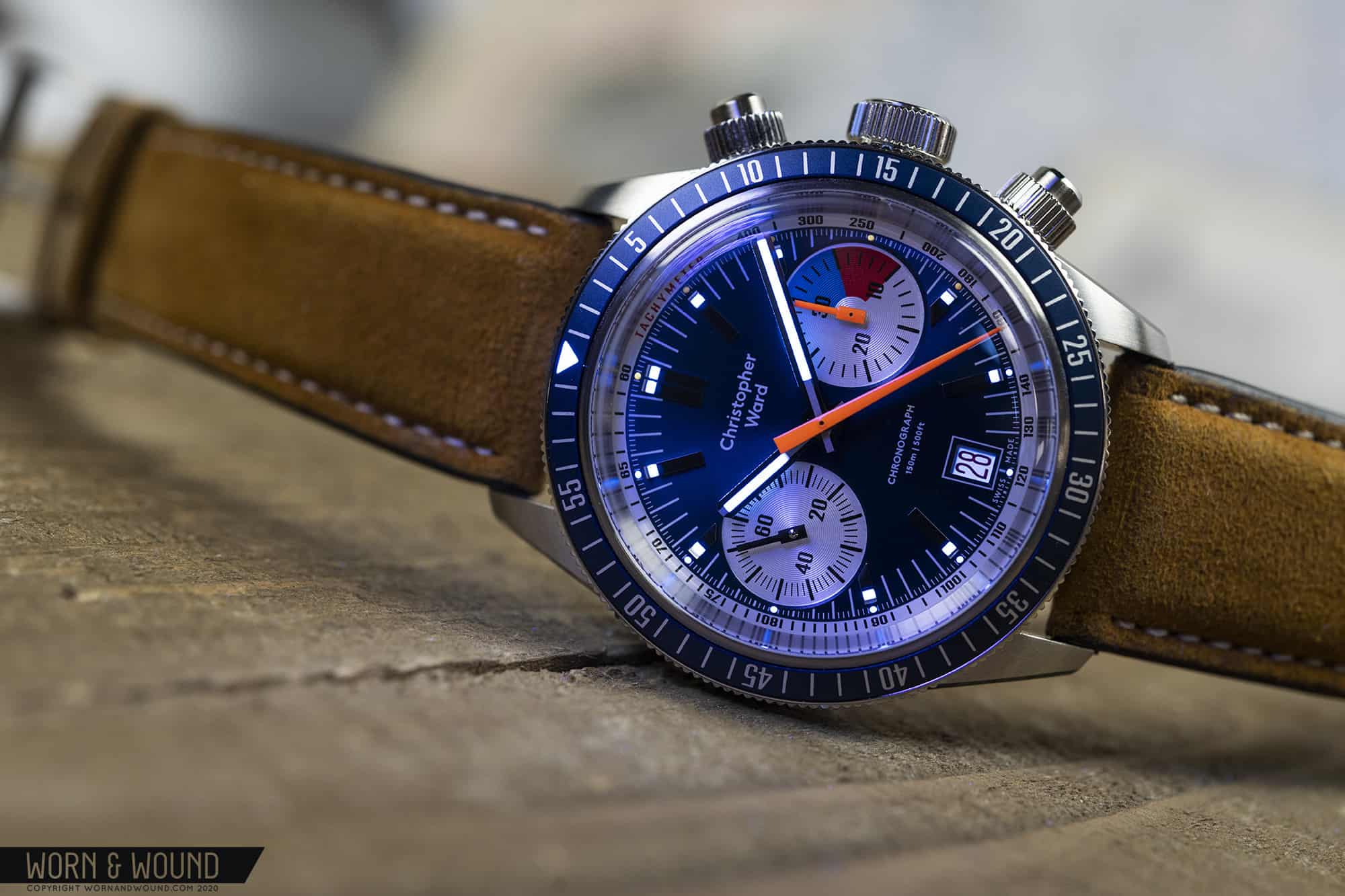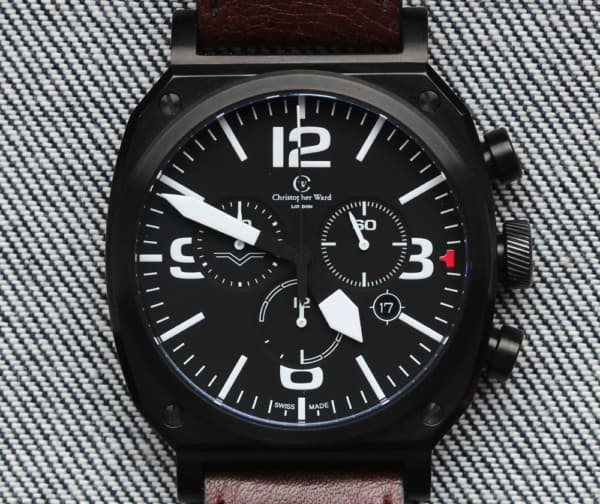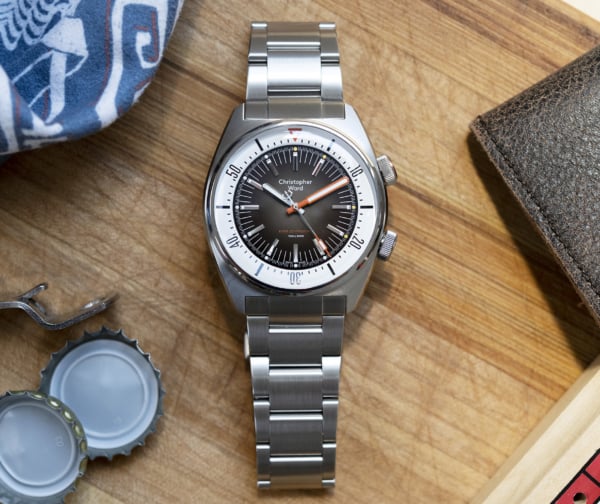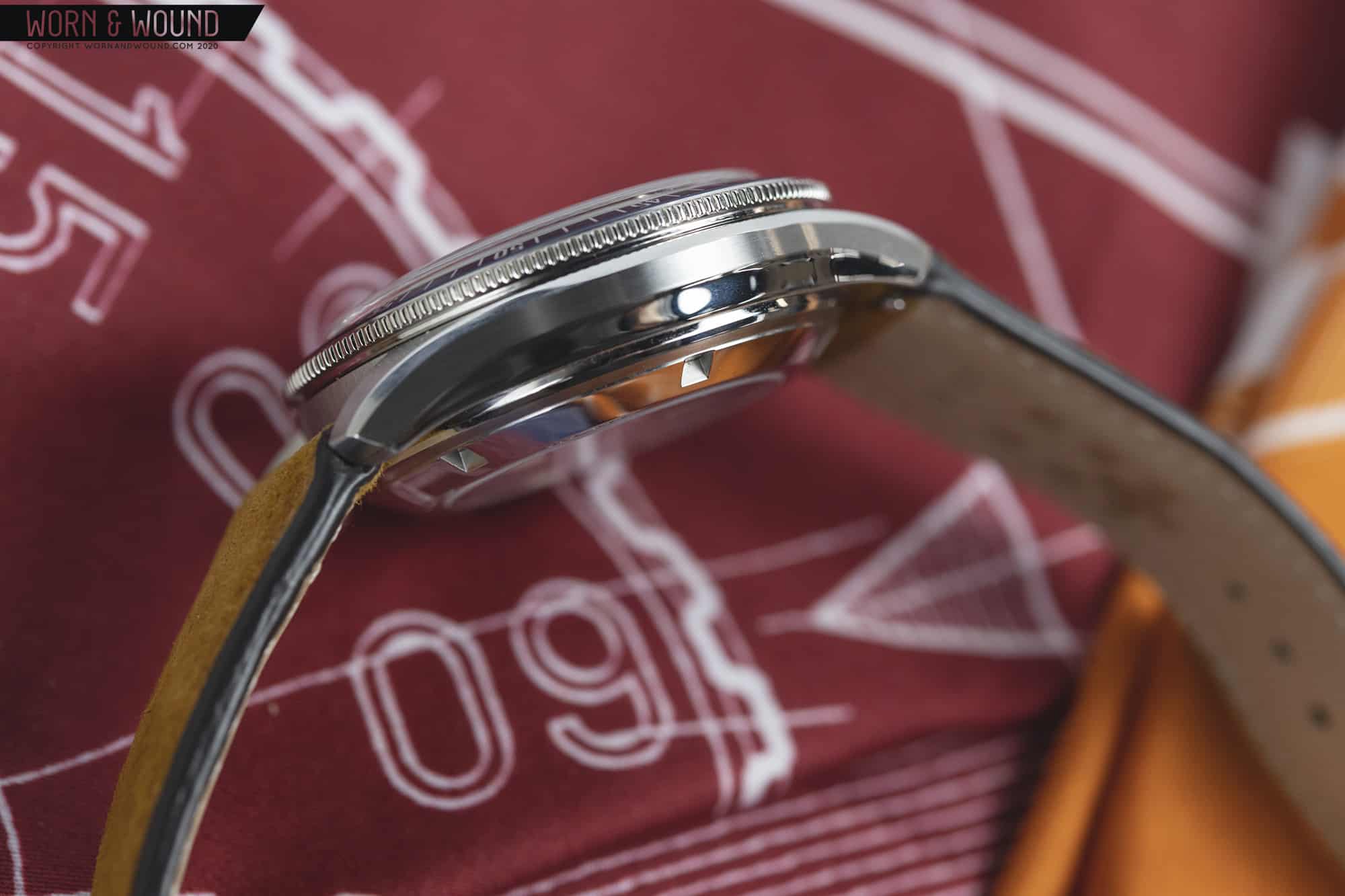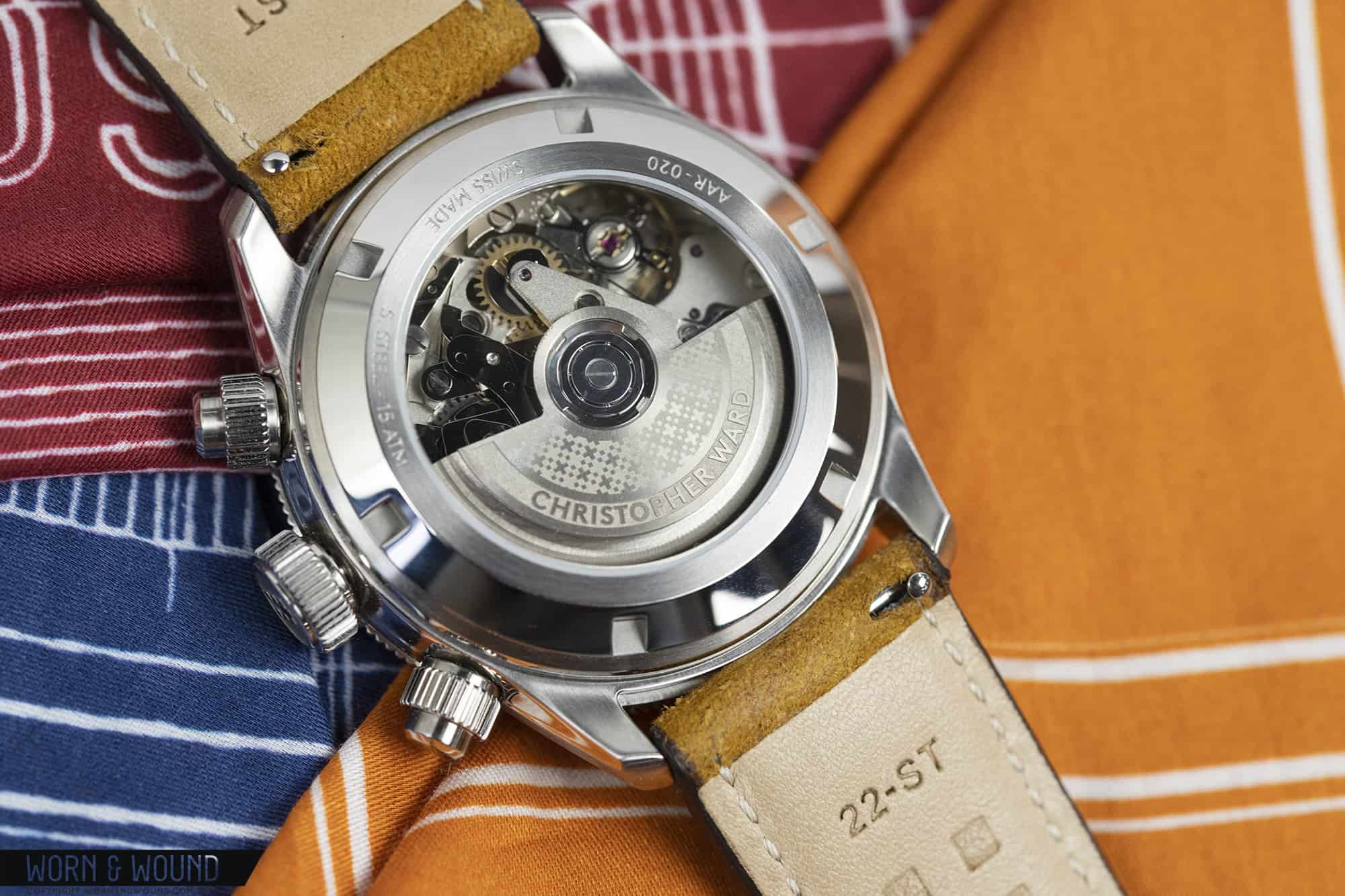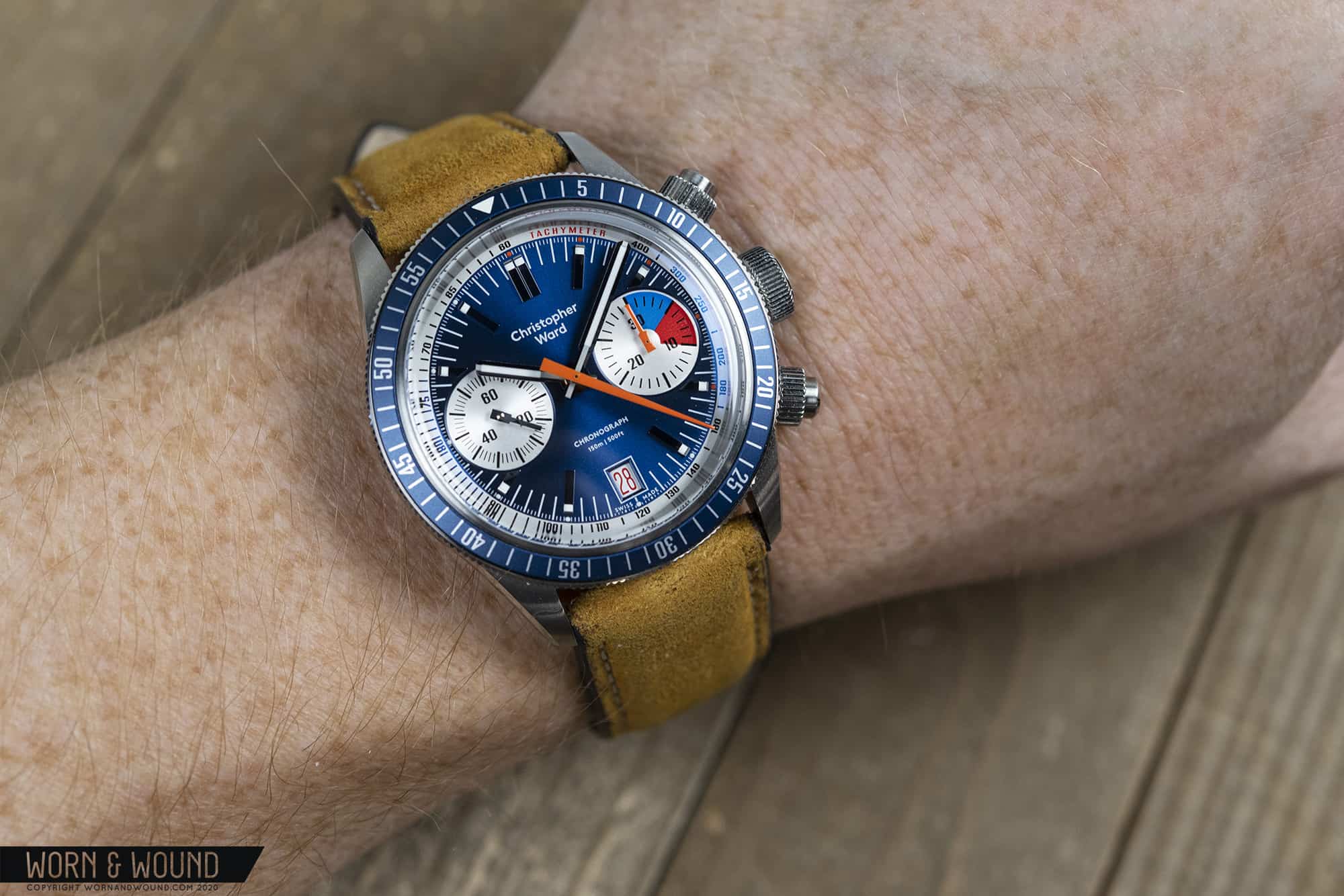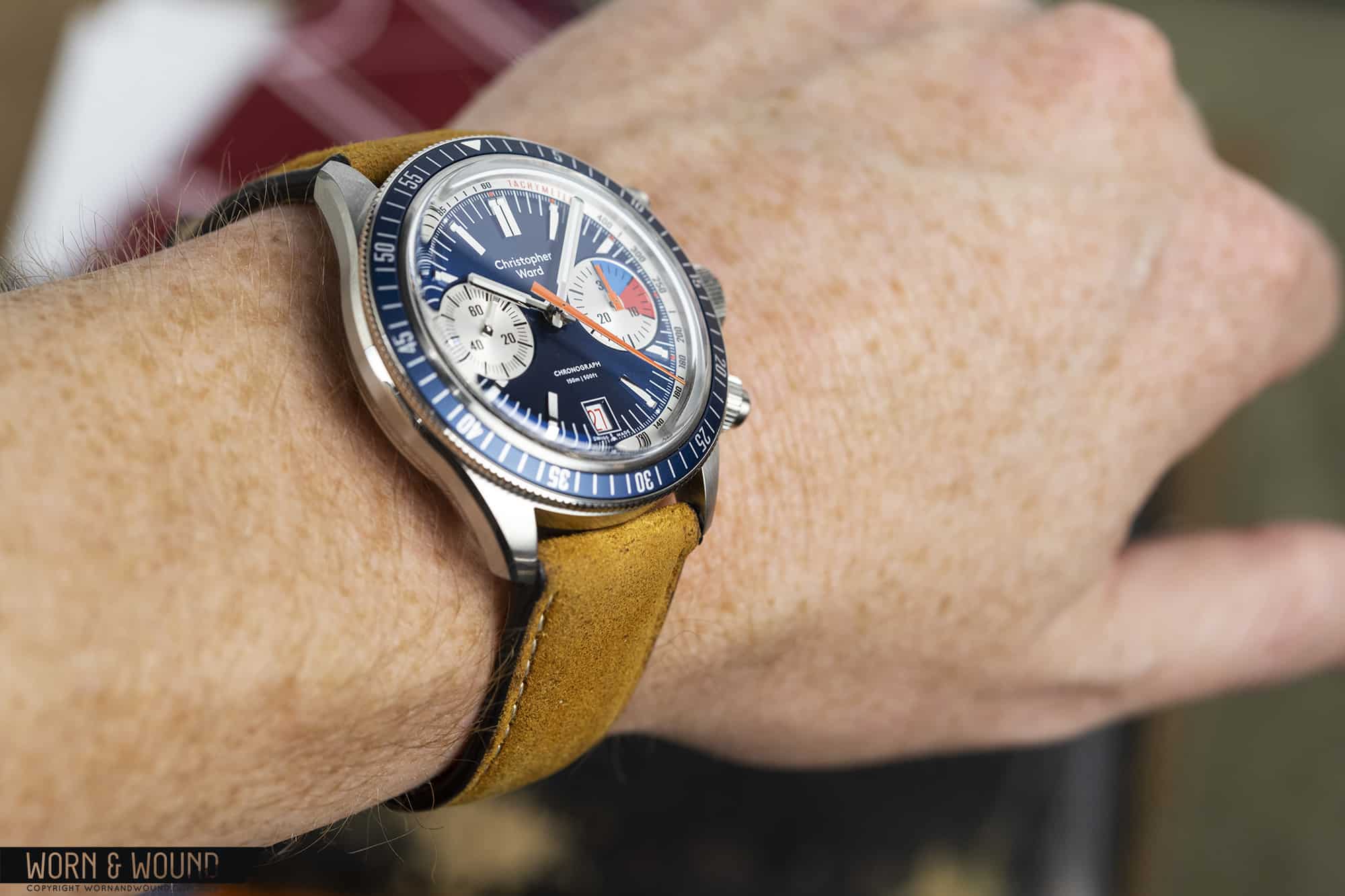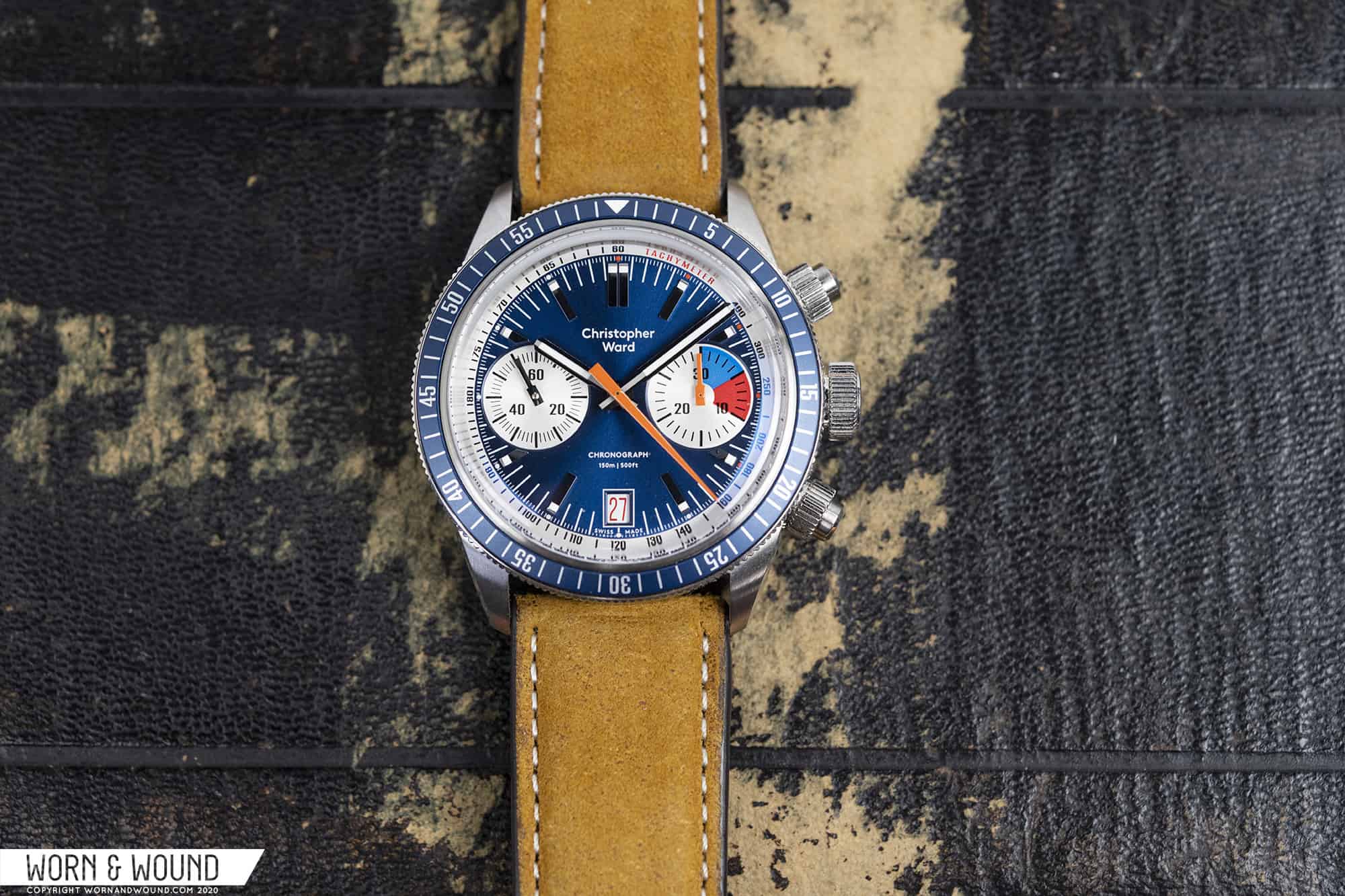Christopher Ward lets their hair down a bit with the release of the new C65 Chronograph nicknamed ‘Wild Thing’. This is the first chronograph to grace the C65 family, and marks the first time a chronograph has appeared in the retro diver range. The watch eschews the brand’s typically reserved styling when it comes to chronographs, instead embracing a colorful tone with vibrant details. This is a fun watch that comes together better than it probably should in what appears to be, somewhat ironically, a step toward maturity for the brand.
The C65 Chronograph is the latest in what’s been a full year of releases from Christopher Ward, showing no signs of slowing in a year that has had many brands from many industries on their heels. While their timelines have been altered (I’m told this was meant to be a springtime release), the brand’s operational capacity feels strong as ever. Beyond that, the watches they’ve brought to market this year feel more cohesive in their design and construction. From the C60 Sapphire, to the C65 Super Compressor, to this latest C65 Chronograph.









 Featured Videos
Featured Videos





